using-the-netstat-command-to-troubleshoot-network-issues
Checking for open network connections
Identifying the source of network traffic
Checking for port conflicts
Checking the routing table
Monitoring network performance
netstat (short for "network statistics") is a command-line utility used for displaying active network connections, routing tables, and other network statistics on a Unix-like operating system. It can be a useful tool for troubleshooting network connectivity issues. Here are some ways in which netstat can be used for network troubleshooting:
Checking for open network connections: netstat can be used to display a list of all active network connections on the system, along with their status (e.g., established or listening). This can help you identify any connections that are causing problems or are not working as expected.
Identifying the source of network traffic: By using netstat with the appropriate options, you can see which processes are generating network traffic on the system. This can be useful for identifying applications or services that are using excessive network bandwidth.
Checking for port conflicts: If you are running multiple services or applications that listen on the same port, it can cause conflicts and prevent one or both from working properly. netstat can be used to check which ports are currently in use on the system and which processes are using them.
Checking the routing table: netstat can display the system's routing table, which contains information about how network traffic is being routed through the system. This can be useful for identifying routing problems or misconfigured network settings.
Monitoring network performance: netstat can also be used to display various network statistics, such as the number of packets transmitted and received, error rates, and throughput. This can help you identify network performance issues and diagnose bottlenecks.
Overall, netstat is a powerful and flexible utility for troubleshooting network issues. It can provide valuable insights into the system's network activity and help you identify and resolve network problems quickly and efficiently.
checklist of error for netstat commands with examples
Checking for open network connections
netstat -an
netstat -atn
netstat -aun
netstat -anl
netstat -apn
netstat -s
netstat -atnp
You can combine these options to get more detailed information about the network connections on your system. For example, to display all TCP connections with their associated process IDs, use the following command:
netstat -atnp
Note: Depending on your operating system, the netstat command and its options may differ slightly. Please refer to your system documentation for more information.
how to Identifying the source of network traffic using netstat
netstat -ano
netstat -antp
netstat -aunp
netstat -anop
how to Checking for port conflicts
how to Checking the routing table
In this example, there are three entries in the routing table. The first entry, "0.0.0.0", represents the default route, which means that any packets that do not match the other entries in the table will be sent to the gateway with IP address 192.168.1.1 on interface eth0. The second entry, "10.0.0.0", represents a route to the network with IP address 10.0.0.0, which is accessible directly through interface eth1. The third entry, "192.168.1.0", represents the local network and is also accessible directly through interface eth0.
If you need to add or modify routes in the routing table, you can use the "route" command in Linux or the "route add" command in Windows. However, be careful when modifying the routing table, as incorrect changes can cause network connectivity issues.
how to Monitoring network performance using netstat
In this example, the output shows statistics for IP, ICMP, TCP, and UDP traffic. For TCP traffic, it shows information about active and passive connection openings, failed connection attempts, connection resets received and sent, and the number of segments received, sent out, and retransmitted.
You can use these statistics to monitor network performance and identify any issues or bottlenecks. For example, if you see a high number of failed connection attempts or connection resets, it may indicate a problem with network connectivity or a misconfigured application. If you see a large number of segments being retransmitted, it may indicate network congestion or packet loss.
Note that the "netstat -s" command may require root privileges to display all network statistics, depending on your operating system and configuration.


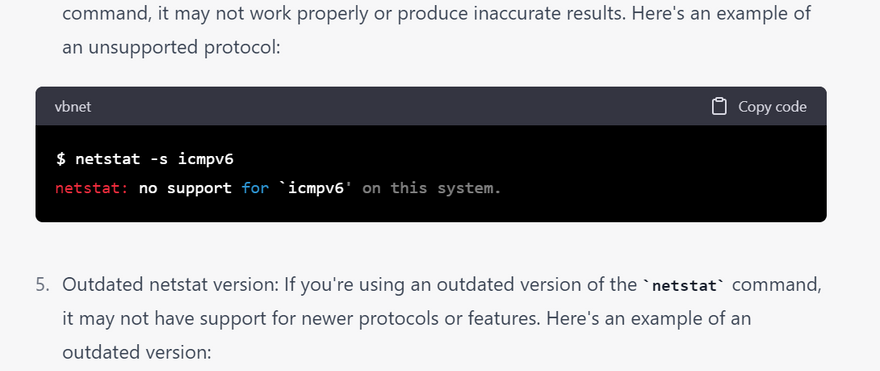
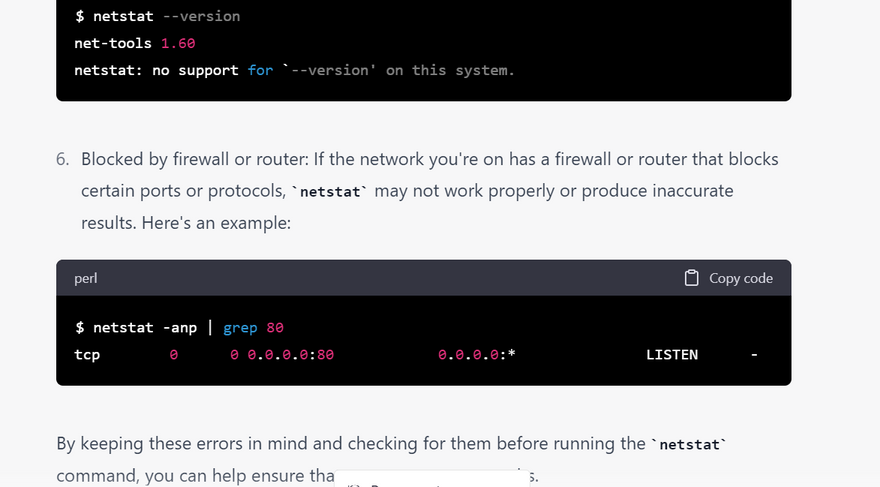
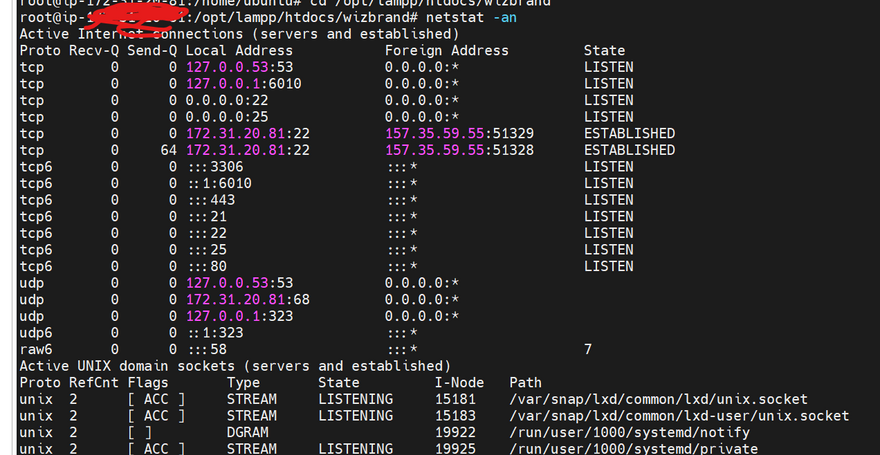
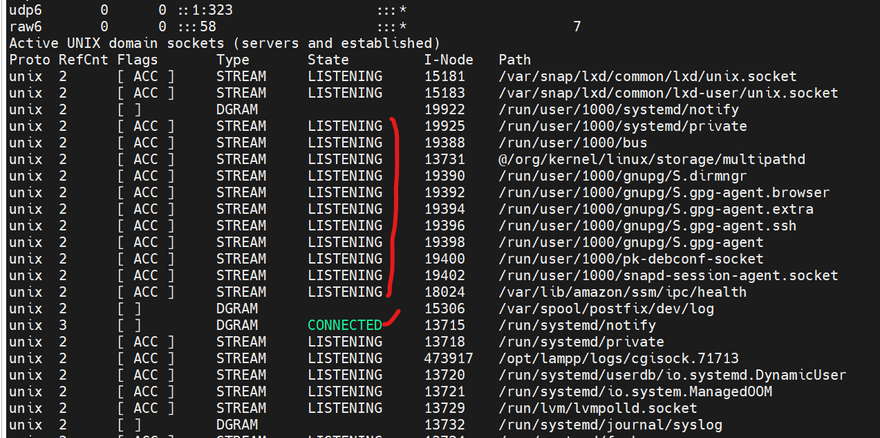
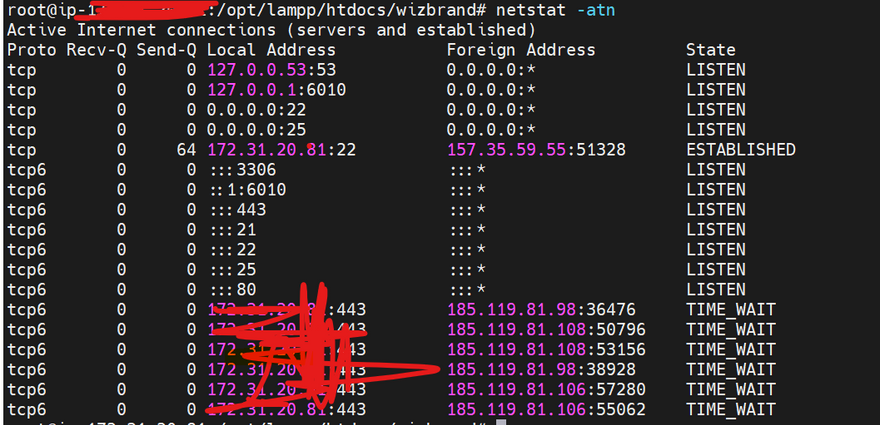


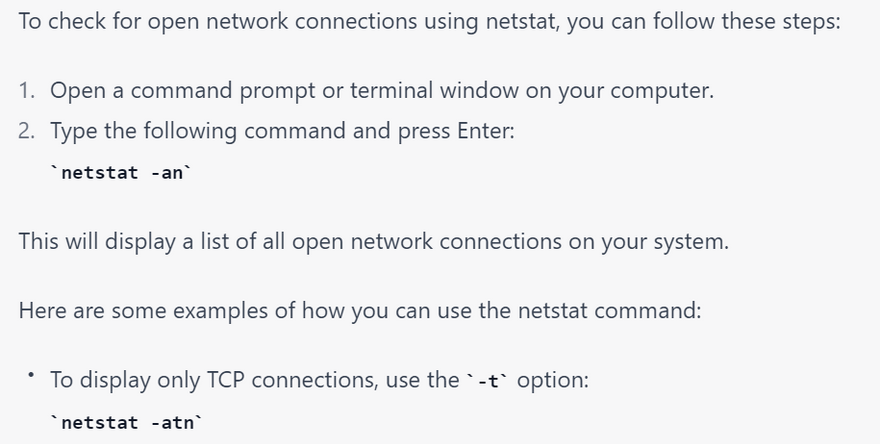
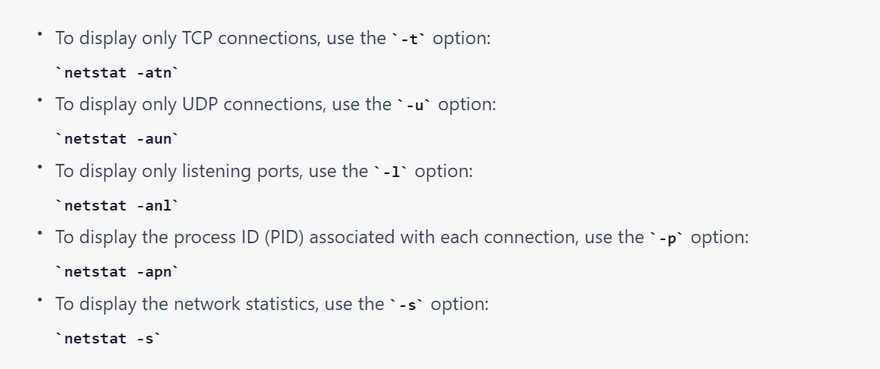
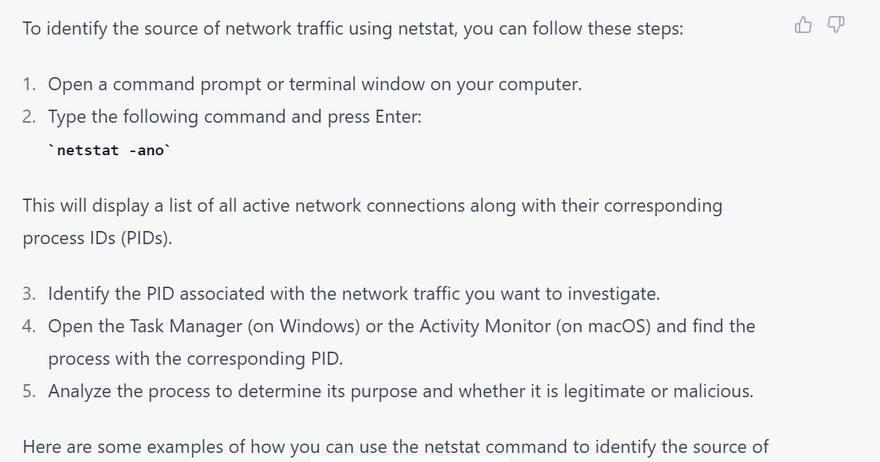
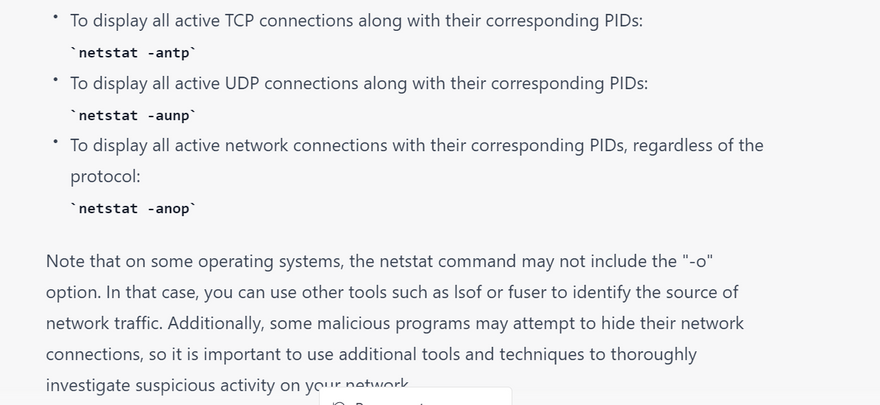
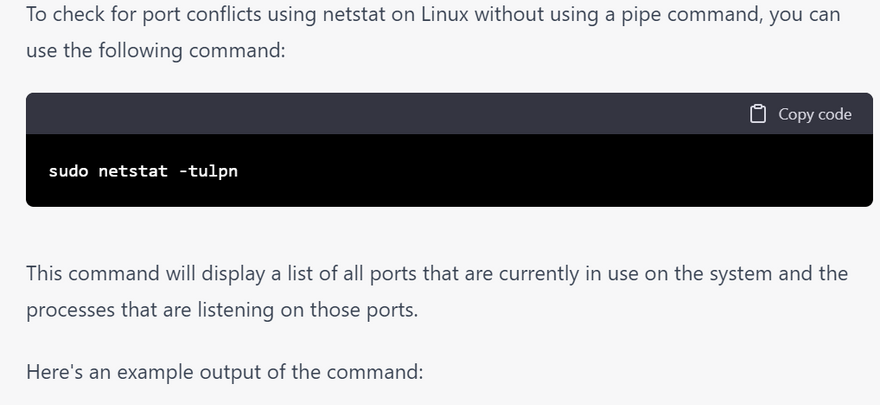
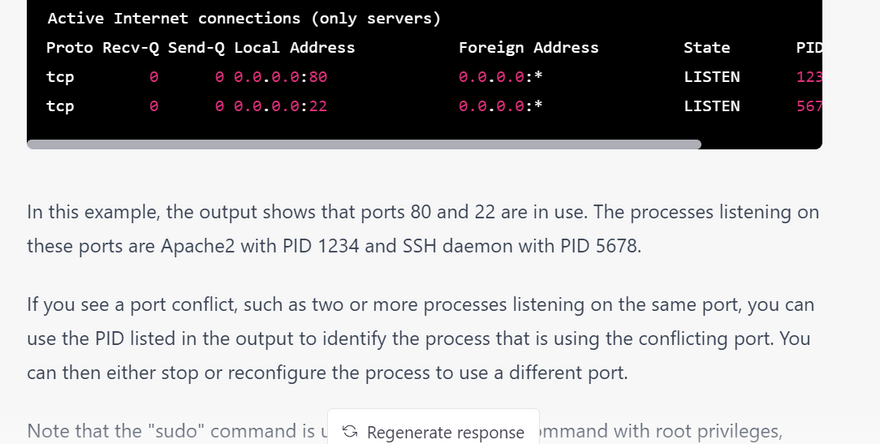
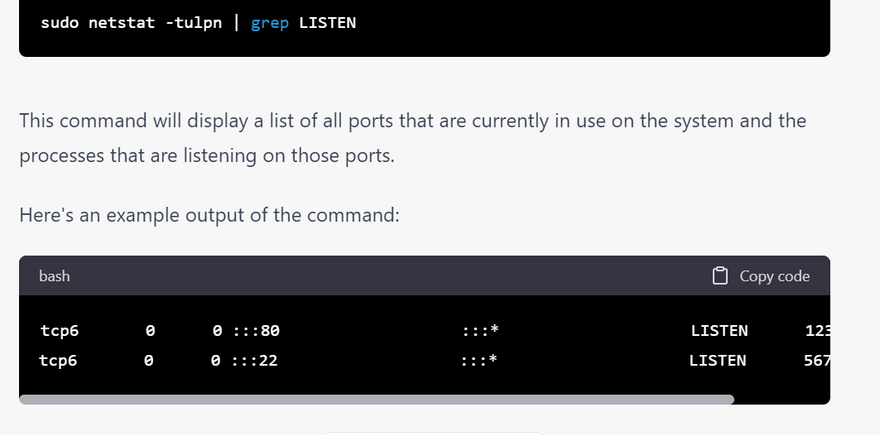
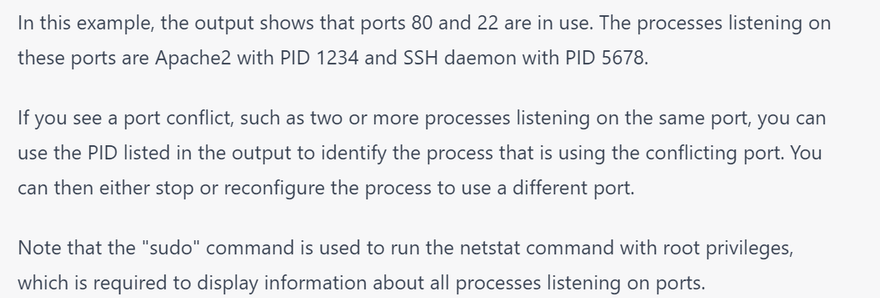
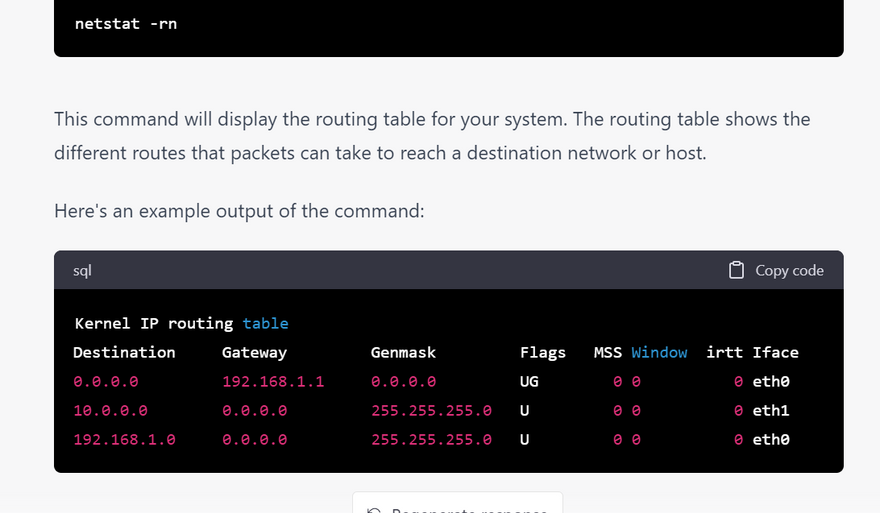

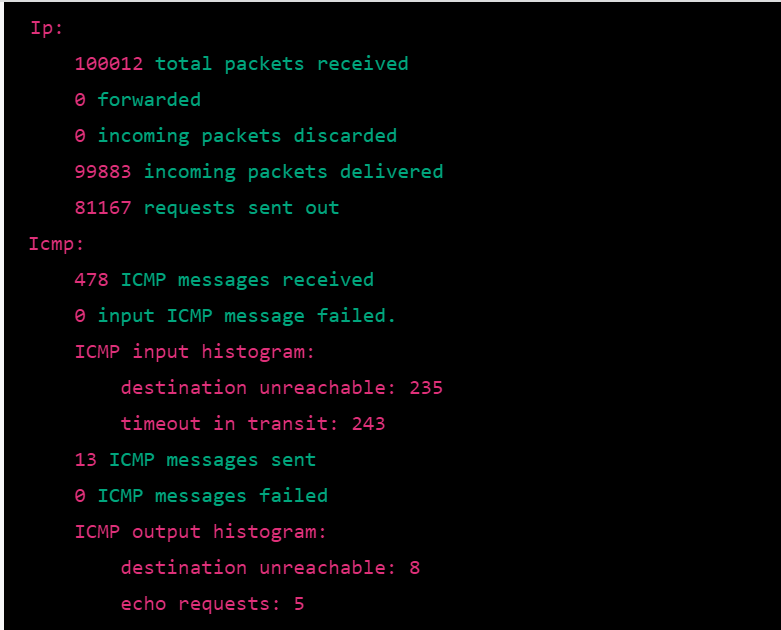
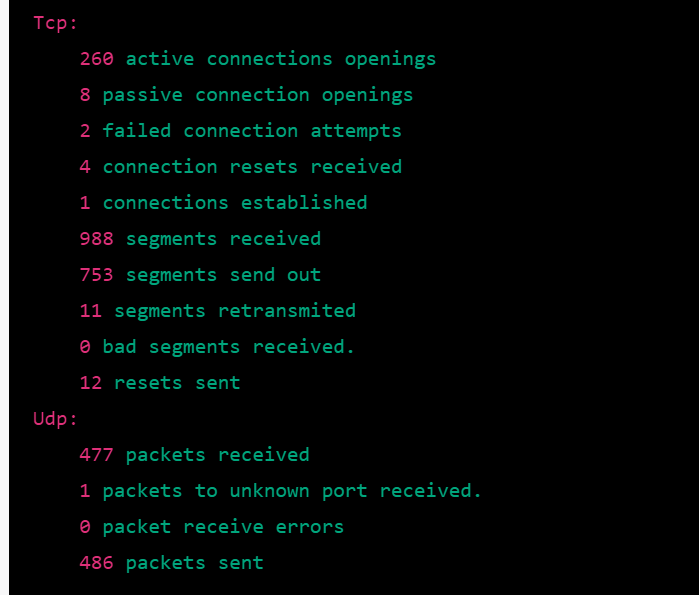

Top comments (0)